Conservation of Waste Rice and Estimates of
Moist-soil Seed Abundance for Wintering
Waterfowl in the Mississippi Alluvial Valley
Principal Investigators
Dr. Richard M. Kaminski
Mississippi State University Department of Wildlife and Fisheries
Dr. Kenneth J. Reinecke
United States Geological Survey, Patuxent Wildlife Research Center
Graduate Research Assistants
Jennifer Kross
Mississippi State University Department of Wildlife and Fisheries
Ed Penny
Mississippi State University Department of Wildlife and Fisheries
Waste rice in harvested fields and seeds and tubers in natural moist-soil wetlands are important foods for waterfowl in the Lower Mississippi Alluvial Valley (MAV). We conducted experiments in 19 rice fields in Arkansas and Mississippi during autumns 2003 and 2004 to evaluate the ability of post-harvest practices to conserve waste rice. Standing stubble contained the greatest abundance of waste rice (94 lb/ac) followed by burned (64 lb/ac), mowed (60 lb/ac), rolled (45 lb/ac), and disked stubble (43 lb/ac). We recommend leaving stubble or burning fields to create interspersion of stubble and water after flooding, which is attractive to waterfowl. We also estimated abundance of moist-soil seeds and tubers in management units on state and federal lands throughout the MAV in 2002 - 2004. Mean seed abundance was 442 lb/ac but, after correcting for seeds missed during sample processing, a more accurate estimate may be 495 lb/ac. The latter value is currently used by the Lower Mississippi Valley Joint Venture of The North American Waterfowl Management Plan to estimate waterfowl carrying capacity of moist-soil wetlands for habitat conservation planning in the MAV. Because increased seed and tuber production generally occurred in actively managed moist-soil units (i.e., soil disked annually or every several years, spring draw-downs, herbicide use, etc.), we recommend active management of moist-soil wetlands to produce increased yields of moist-soil seeds and tubers and mitigate decreased abundance nowadays of waste rice and other agricultural seeds.
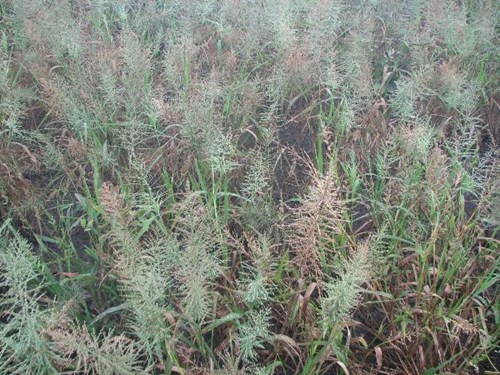
Moist soil vegetation produces an abundance of seed...
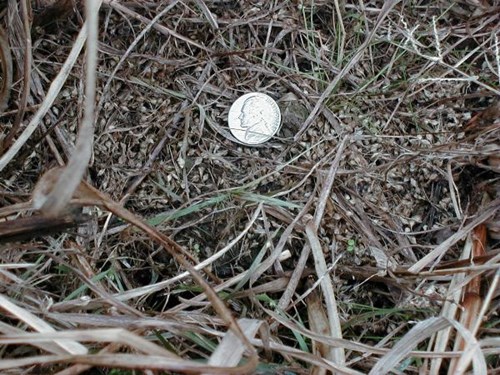
...which are an important food source for wintering waterfowl in Mississippi.
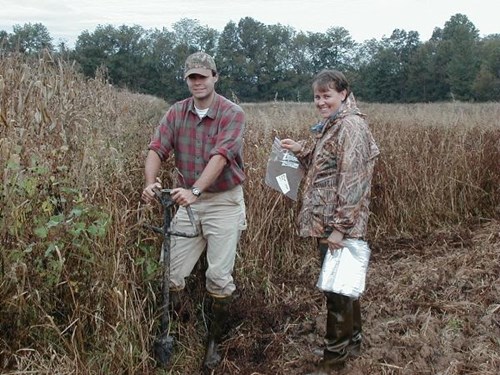
Graduate students Ed Penny and Jennifer Kross collect soil core samples from which they will count seeds to determine moist-soil seed abundance.
Funding for this project was provided by:
 |
 |
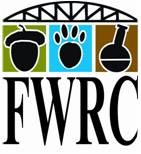 |
 |
 |
 |
 |
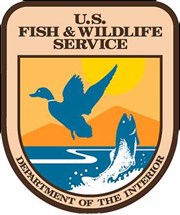 |









